MAFMC and the ASMFC vote to screw commercial fishermen
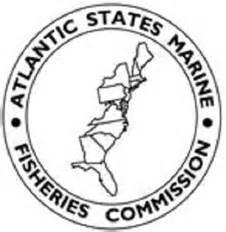 Last week at the Atlantic States Marine Fishery Commission/ Mid Atlantic Fishery Management Council joint meeting these two management bodies voted to steal millions of dollars from the commercial fishing industry by reallocating historical quota from the commercial sector to the recreational sector. The two groups in charge of the management of Scup, Black Sea Bass and Summer Flounder voted to change the historic quotas of these species that were developed in the creation of their original management plan in the early 1990’s and used data from the 1980’s time period. Quota allocation is always a controversial issue whether it is within a fishery sector, [state by state quota] or between commercial and recreational interests. There always seems to be someone dissatisfied with the result. In regard to these three demersal species, the recreational sector was never satisfied with the results of the real data and have tried for over 25 years to change the allocations in their favor.
Last week at the Atlantic States Marine Fishery Commission/ Mid Atlantic Fishery Management Council joint meeting these two management bodies voted to steal millions of dollars from the commercial fishing industry by reallocating historical quota from the commercial sector to the recreational sector. The two groups in charge of the management of Scup, Black Sea Bass and Summer Flounder voted to change the historic quotas of these species that were developed in the creation of their original management plan in the early 1990’s and used data from the 1980’s time period. Quota allocation is always a controversial issue whether it is within a fishery sector, [state by state quota] or between commercial and recreational interests. There always seems to be someone dissatisfied with the result. In regard to these three demersal species, the recreational sector was never satisfied with the results of the real data and have tried for over 25 years to change the allocations in their favor.
They finally accomplished their goal, and in the process stole over $750,000 annually worth of fish from the commercial industry, while rendering worthless the recently successful years long fight of a number of states to 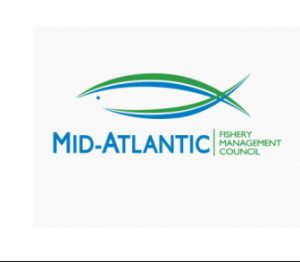 reallocate commercial quota in the Fluke and Black Sea Bass fisheries. Those fish were just given to the recreational industry. The change in percentage of quota for these species is as follows.
reallocate commercial quota in the Fluke and Black Sea Bass fisheries. Those fish were just given to the recreational industry. The change in percentage of quota for these species is as follows.
Summer Flounder went from a 60/40 commercial/ recreational split to 55/45 amounting to roughly 100,000 pounds of fish annually, [based on 20-million-pound combined coastwide quota]. With an average dockside price of $3.00 a pound, that is a loss of $300,000. each year for the commercial
industry.
The Scup quota went from a 78/22 commercial/recreational split to a 65/35 split amounting to a loss of about 330,000 pounds of scup annually [based on a 26.5-million-pound combined coast wide quota]. With an average dockside price of .75 cents a pound this is a loss of $250,000 each year for the commercial industry.
The Black Sea Bass quota went from a 49/51 commercial/recreational split to a 45/55 split amounting to a loss of 50,000 pounds of fish annually, [based on a 12.5-million-pound combined coast wide quota]. With an average dockside price of $4.25 a pound, this is a loss of $212,000 each year for the commercial fishermen who depend on them.
This amendment, if approved by the commerce secretary would take over $750,000 a year annually from the commercial sector and give it to the recreational sector, which has a terrible track record of staying within their annual quota allocations of many species, not just these three. I sympathize with the recreational industry because their landings [or catch], data has been crap since the beginnings of management. The original data collection through the MRFS system was deservedly criticized for its wildly inaccurate estimates throughout its history, so much so that NMFS eventually saw
the need to end it amid the creation of a new improved data collection system called MRIP. This cost millions of dollars to create and is just as useless as the system it replaced. After its implementation around 2018 the recreational industry was aghast at the results which showed them overfishing their quota’s even more than previously thought. So, in order to turn lemons into lemonade the ASMFC and its state directors set to work to address this issue. Obviously if the recs can’t stay within their quota’s, then they must need more fish, and the only place to take it, is the commercial industry. Instead of doing the intelligent thing by reducing the recreational size limits so that they can reduce discard mortality by converting them into landings. The important point to remember here is that the ASMFC’s primary funding source is SK money which is derived from a tax on fishing tackle, fuel and other items primarily coming from the recreational industry. State directors, who sit on both the ASMFC board, and the MAFMC know that they cannot kill the goose that lays the golden egg, so they have a vested interest in making sure that the recreational industry stays viable. Some of them are outright hostile to the commercial industry, because they don’t have much of one in some states.
In regard to this amendment, it seems that the ASMFC has decided that since they simply have no idea how many fish are caught by the recreational industry, then by using the best science available, the new MRIP data, [which claims recreational catch is much greater than they thought it was], the only way to address the problem is to steal quota from the commercial side. So, by using the new MRIP data they figured if it presently shows so much more recreational fishing now, than they thought there was, [no matter how erroneous it may be], then the recreational catch must have been way more than they thought it was in the past, giving them the pretext to change historical landings so they can justify this resource steal. This will not solve the problem; the recs will still overfish as long as any type of telephone or letter questionnaire is being used as the primary source of data collection. This type of survey is a total waste of taxpayer dollars and about as accurate as guessing how many jellybeans are in a five-gallon jar. The only way to get accurate catch data for recreational fishermen is by dock intercept where the actual fish can be observed and catch data such as how many anglers are on their boats, what type of gear did they use, what were they targeting, etc. All else is simply conjecture. Since millions of dollars have been spent creating this great new improvement of the old MRFS collection system it seems that nobody in management wants to admit that MRIP is no better than MRFS, maybe worse. But it has served its purpose for the state directors who masterminded the steal. I attended two scoping hearings in New Jersey and asked the audience at both of them [and they were predominately recreational fishermen] if anybody in the room thought that the new MRIP data was accurate. No one raised their hand. I then asked if anybody thought the data was better than the old MRFS data, once again no one raised their hand. So, management has a real credibility problem with their recreational catch data, and the millions spent on the new collection system seems to be a waste of time and money that won’t be corrected by reallocating fish from the commercial sector. I think currently the most accurate recreational catch data comes from VTR’s from party/charter boats, it may not be perfect, but it is probably 90% accurate. Captains have no way of knowing if there is an under- cover enforcement agent on board their vessel, and they also know that accurate data is a good thing
for the industry as a whole. The Northeast Fishery Science Center has to stop relying on mathematical equations for their science and get out into the real world and get accurate data collection from the only accurate source, dockside intercepts. Stop deceiving yourselves and the public. Judging by the public comments at the scoping meetings, they’re not fooled. Surprisingly, I also heard very few recreational fishermen saying that they thought taking commercial quota was the answer to their problem. It should be pointed out that due to covid restrictions, the legally required public hearings, [which are different then scoping hearings] could not be held in person, and were done virtually, causing way less participation in the management process.
Multiple people pointed out that the recreational industry has been in a downward participation spiral for 20 years now, with about half the participation rate of the general public as there was in the 1990’s, which leads to the obvious question, with such minimal bag limits and large minimum sizes and half the fishermen as there used to be, how can they possibly be catching more fish now then years ago? New Jersey alone has lost over 50,000 registered boats in the last fifteen years. Those people are not going out on party boats now, that fleet is almost extinct, so who’s catching all these supposed fish that MRIP claims is being caught? If the general fishing public does not believe the MRIP data is accurate and that it overestimates their catch, then it’s hard to see how that data could then be used to go back in time and claim that the data from the 80’s underestimated recreational catch and use that to justify a resource steal. Besides being ashamed of themselves for approving this plan, the council and Commission should reevaluate recreational data collection and devise a new system that uses only VTR and dock intercept data. Nothing else will ever be accurate and MRIP data will never gain the confidence of the fishing public.
There is one other incredibly serious issue with this, as yet not finally approved allocation Amendment. This present amendment, which has serious financial implications to the commercial fishing industry, had to go through a full amendment process involving many hearings, and meetings
taking over two years from start to finish. That is because reallocation of fish stocks is a serious matter and should not be done expeditiously, especially when it involves commercial/recreational shares and the ASMFC is involved. This allocation amendment approved by the ASMFC and the MAFMC includes changing the requirement to revise quota reallocation issues from only being able to use a full-blown Amendment, to allowing a change of quota using only a framework, which legally only requires Two council meetings. {less than 90 days]. Public hearings and involvement are reduced to a minimum and it gives the management bodies the right to steal for their pet sector. {Sounds like Déjà vu to me].
There will still be time to voice your opinion on this matter to GARFO but the start of the comment period has not yet been announced.
Thanks, Jim Lovgren

































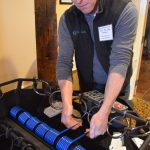
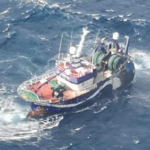
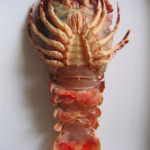
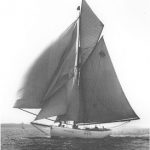

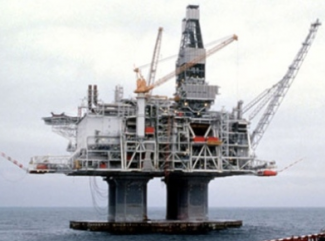
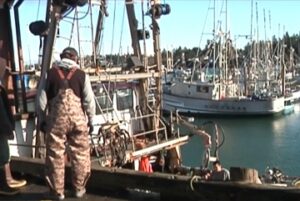


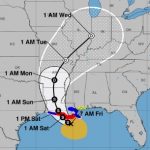




While I agree with some of your points, a majority of your baseline argument couldn’t be more wrong. When new MRIP was implemented, historical recreational catch statistics changed which should have immediately changed the 60/40 allocation. Can’t use old MRIP for the allocation which favors the commercial sector and new MRIP for recreational landings which penalizes the recreational sector. No mention of the fact that over the years with continued insane increases in recreational size minimums that the commercial sector today has exclusive harvest rights to a majority of the summer flounder stock. The result, commercial catch values as a result of those exclusive rights have maintained and actually increased catch values over the years while the recreational sector has had a sizeable portion of the stich taken away, list days in their season, given up more than 50% of their daily possession limits and has essentially been turned into a catch and release fishery with over 90% of fish caught nit meeting ridiculously high size minimums. In 2018, over 7 million angler trips or 83% of directed summer flounder recreational angler trips resulted in ZERO keepers. The allocation issue you complain of transfered nothing from the commercial sector to the recreational sector as the baseline the allocation keys off if was changed and both sectors received increases in 2022 so let call a spade a spade. Difference is, which is one of the few points of your tirade I agree with, is commercial will have all year to fill that quota and I’m sure they will and benefit from higher catch values while selectively targeting exclusively larger higher market value fish exclusively from the breeding stock and continue netting during the spawn as we collectively watch recruitment statistics tank and commercial discard rates be grossly under-reported on VTR reports . Recreational on the other hand will be handicapped by as you mentioned MRIP statistics which
are completely useless and the increase in quota will never be realized. 92% of directed angler trips end up with one fish or less and you’re position is the commercial sector has gotten the short end of the stick in this fishery. If anyone is and has been getting screwed as you put it in this fishery, it is certainly not the commercial sector.